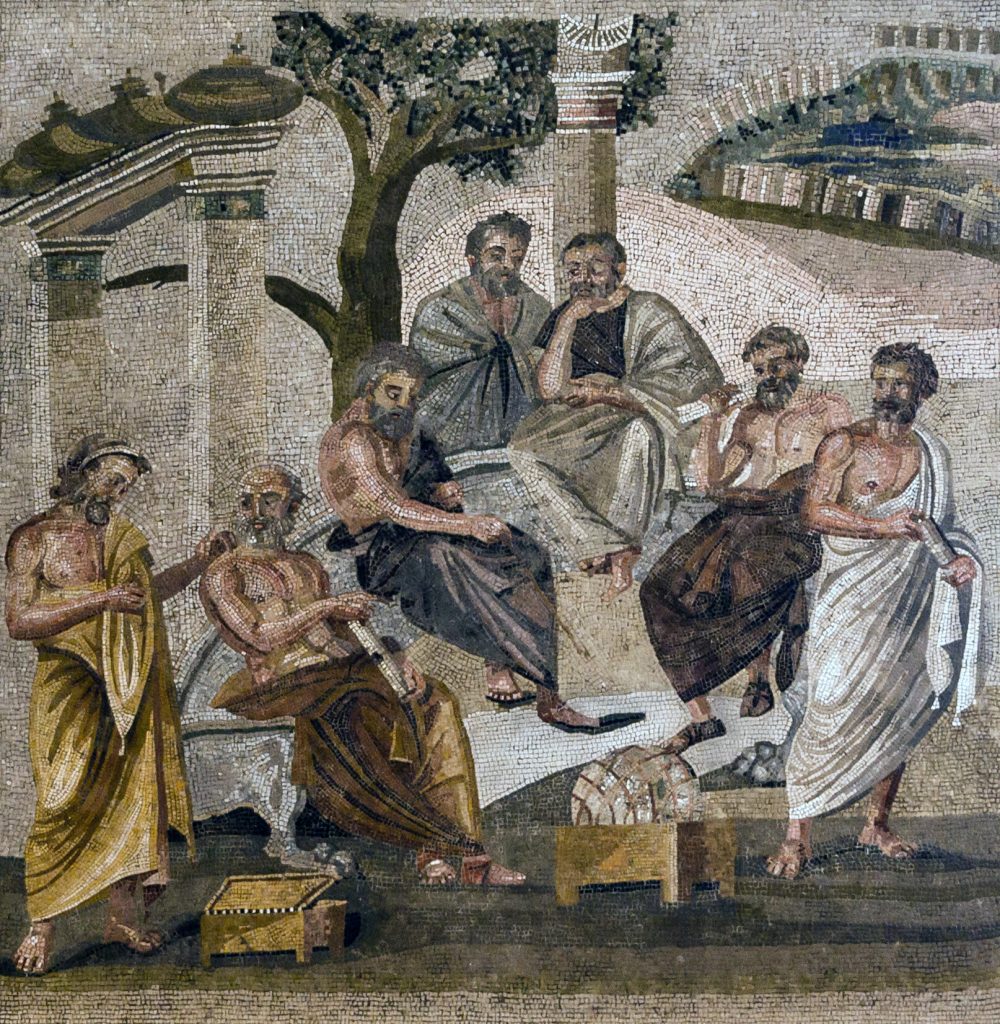Antiquity (c. 500 BCE to 300 CE)
Ancient philosophy and theories of colour vision

Figure 1.3. Depiction of Plato’s Academy. Image attribution: Unknown author, Plato’s Academy mosaic from Pompeii, marked as public domain, on Wikimedia Commons
Ancient Greek philosophers such as Democritus, Plato (See Figure 1.3) and Aristotle devised theories of colour based on the teachings of Pythagoras and theories of music, maths, astronomy, and universal harmony. The four colours of white, black, red and yellow were popular as the basic and elemental colours used in much of ancient Greek artwork – perhaps because of the plentiful earthy pigments (ochres) that were used at the time.
Democritus theorised about energy and the characteristics of atoms in an object which created visible colours. Plato thought that the eye transmitted rays of vision towards an object (fire rays placed in our eyes by the gods), which also self-radiated rays of colour.
Aristotle, however, rejected theories of the eye radiating rays of vision because if that were true, he argued, we would have the ability to see at night. Aristotle’s colour system included seven primary colours: white, black, red (crimson), yellow, violet, green and blue.
Ptolemy (Claudius Ptolemaeus), an ancient astronomer, geographer, and mathematician, considered the Earth the centre of the universe (the “Ptolemaic system”). He experimented with optics and light refraction, and believed that the eye generates rays which send back information about colour, shape, size and distance.
Optics is a branch of Physics – it's the science that deals with light. Optics explains how light energy behaves and interacts with matter.

